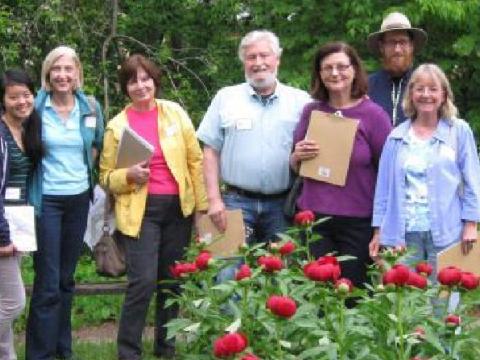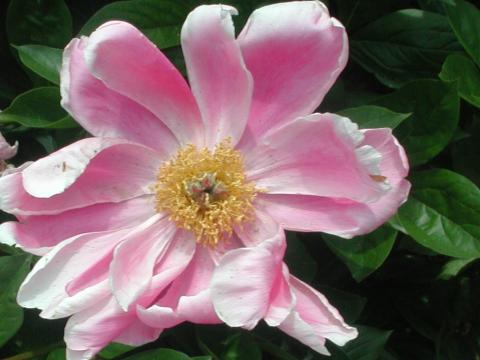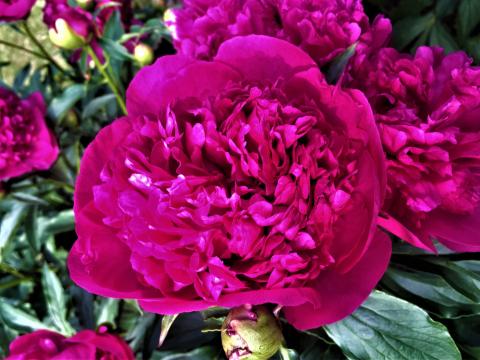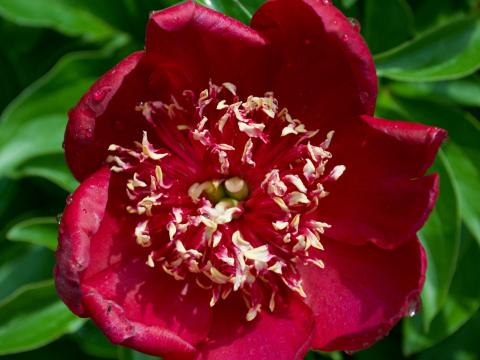The peony garden at the Nichols Arboretum has never been routinely – if ever – fertilized since at least the 1930s – nearly a century ago!
Because of the viral and genetic research being done in the Peony Garden, we do not use any kind of chemicals that could impact the results of the study- including fertilizers and pesticides. Learn more about the research taking place in the garden.
For information on basic peony care, visit the American Peony Society website.
Dr. Hong De-Yuan lists 48 different peony species (33 species and 15 subspecies) in his book Peonies of the World Taxonomy and Phytogeography, published in 2010. These wild peonies are mainly found in Asia and Europe. There are two summer-dormant species native to arid parts of western North America.
The American Peony society lists just over 7,000 different cultivars in their registry. This includes herbaceous, Itoh, and tree peonies. The Peony Garden is currently home to 365 known herbaceous cultivars, 37 herbaceous peonies whose IDs are unknown, 132 known tree peony cultivars, 21 unknown tree peony cultivars, and 38 Itoh hybrids.
For more information about peony species, visit the American Peony Society website. The American Peony Society’s cultivar registry can be found here.
A cultivar is a breed of peony whose parents are of the same species. Most of the herbaceous peonies in markets today are cultivars of the Paeonia lactiflora species. Hybrid peonies are peonies whose parents are of different species. Check out the American Peony Society’s guide to peony species!
The reproductive process is the same for cultivars and hybrids. Pollen from the anthers of one plant is carefully transferred to the stigma of another. Due to genetic recombination (the random selection of genes from each parent), the offspring will be genetically different from both parents, resulting in a peony that looks different from its parents and a new cultivar.
In order to see if a new cultivar or hybrid is commercially and biologically viable, peony breeders must often wait several years for their new peonies to bloom reliably. If it is established that the new peony has favorable traits and can be propagated through division, the new cultivar can be registered with the American Peony Society.
Curious about the registration process? Check out an overview of cultivar registration!
The Peony Garden is cared for by a team that includes horticulture technicians, interns, and volunteers. The Peony Garden is a large collection and caring for it would not be possible without the generosity of our sponsors and the dedication of our wonderful volunteers!
Interested in how you can help? Visit our website here to explore how you can get involved in the Peony Garden!





